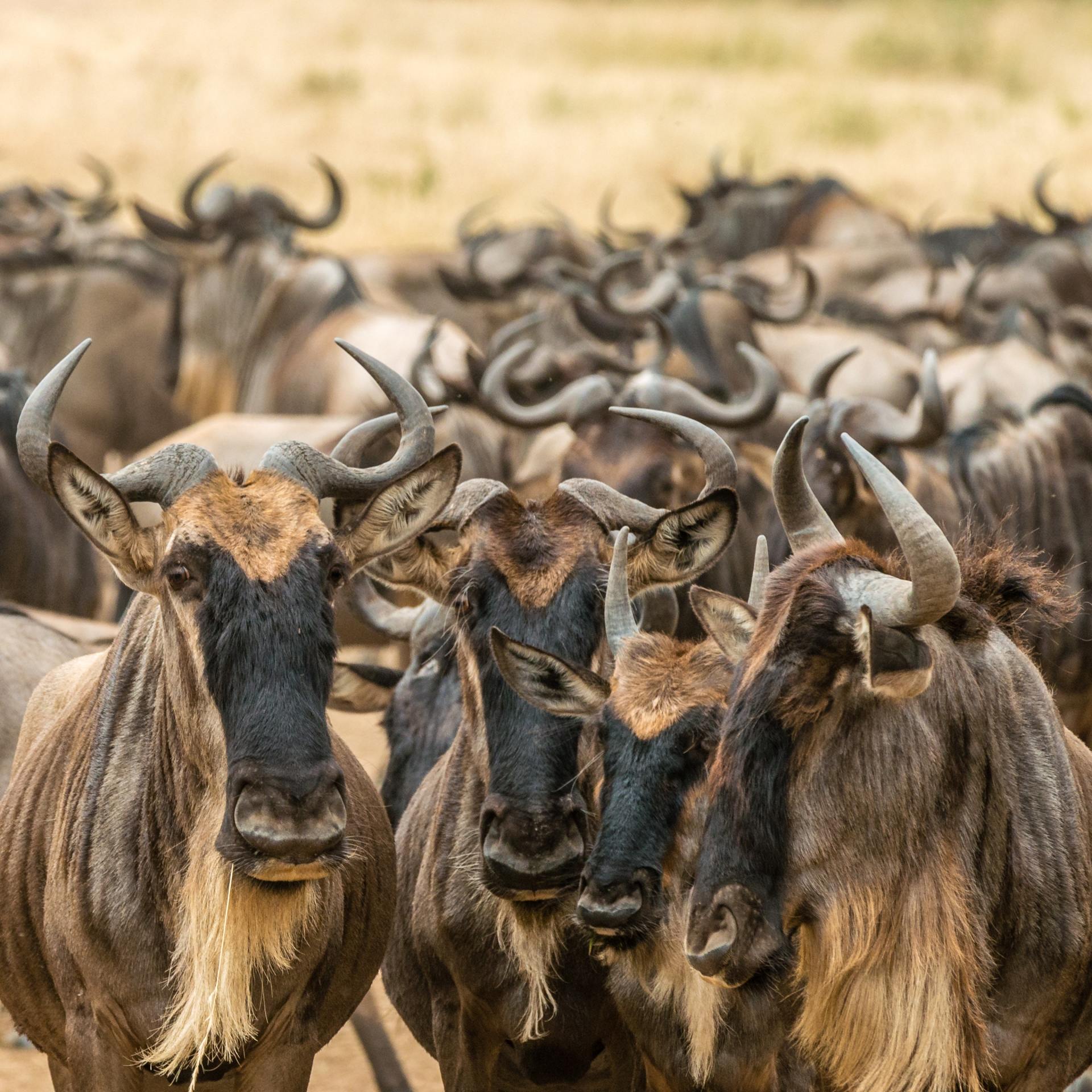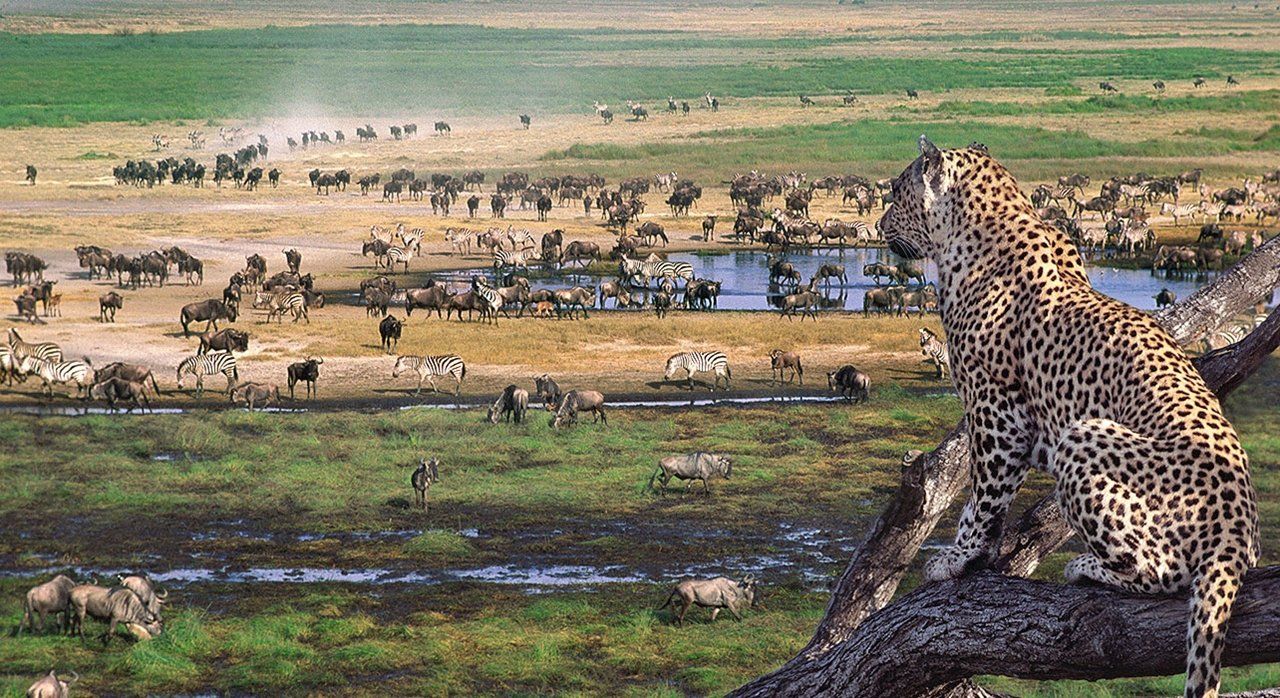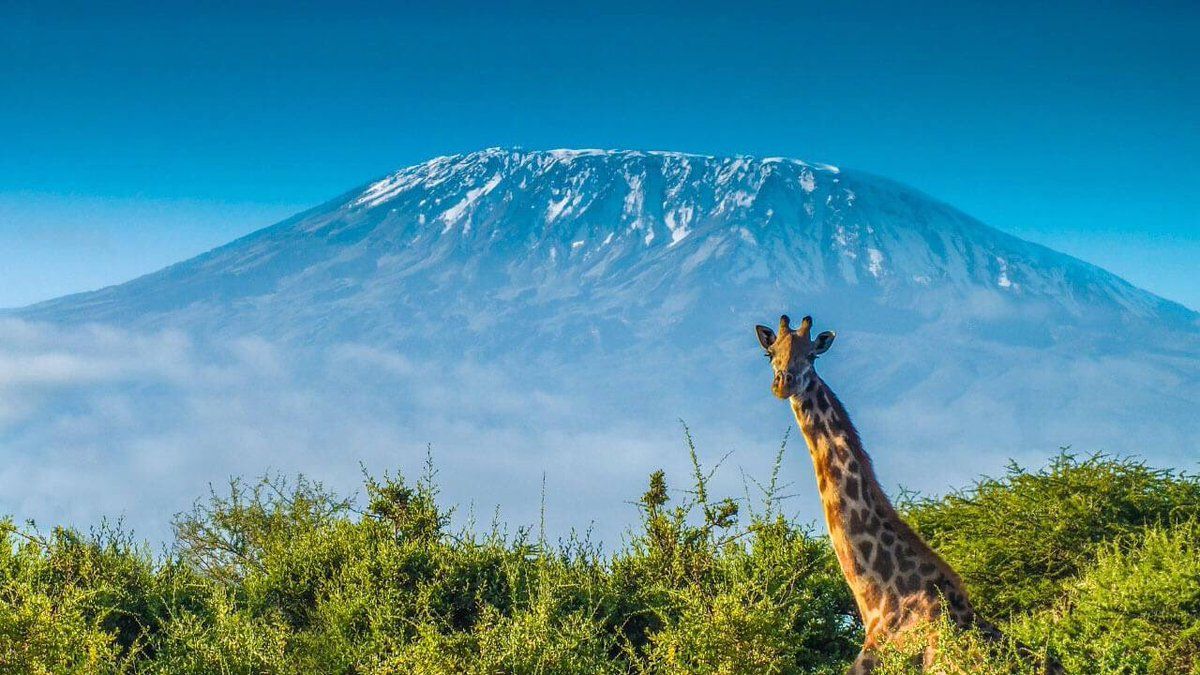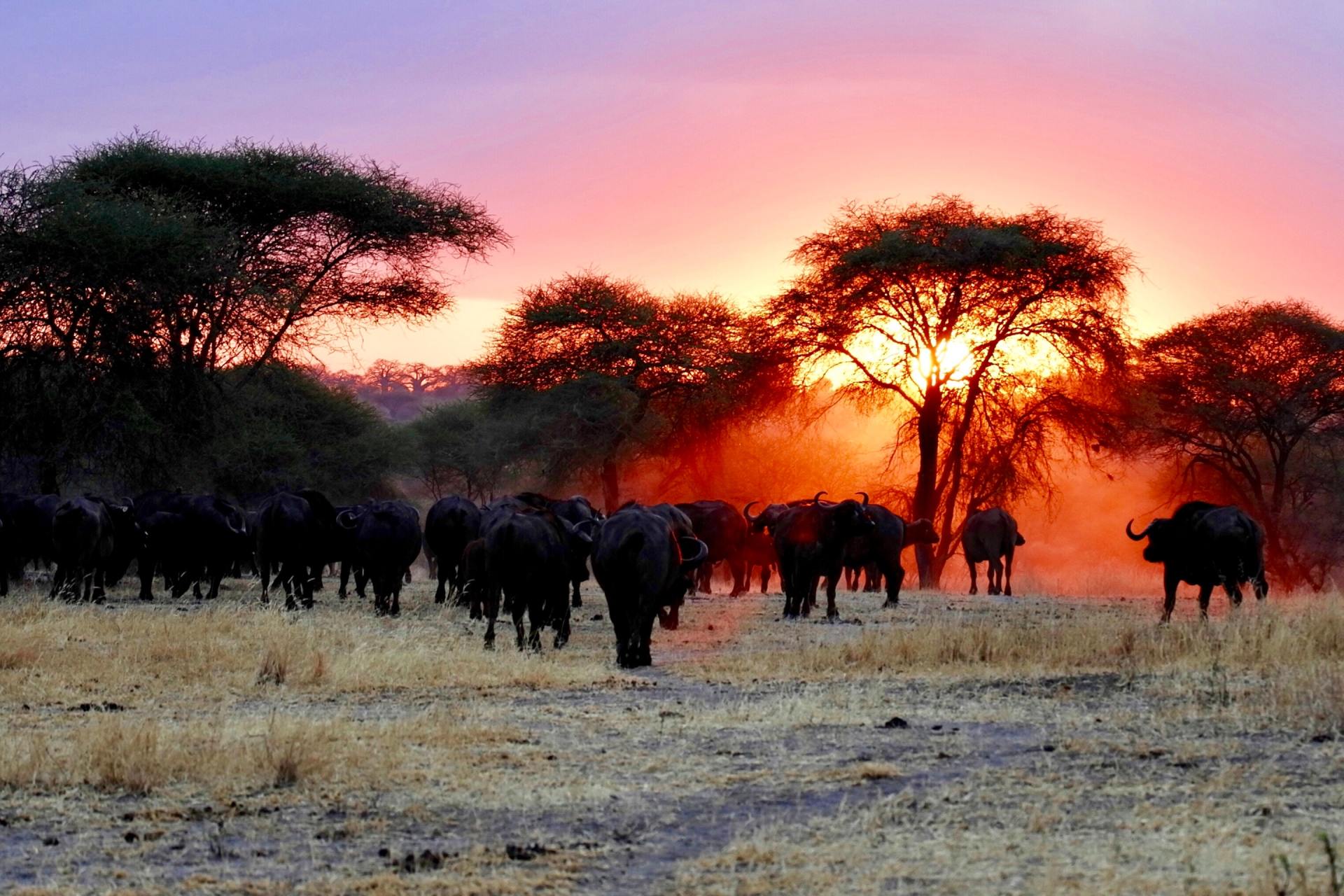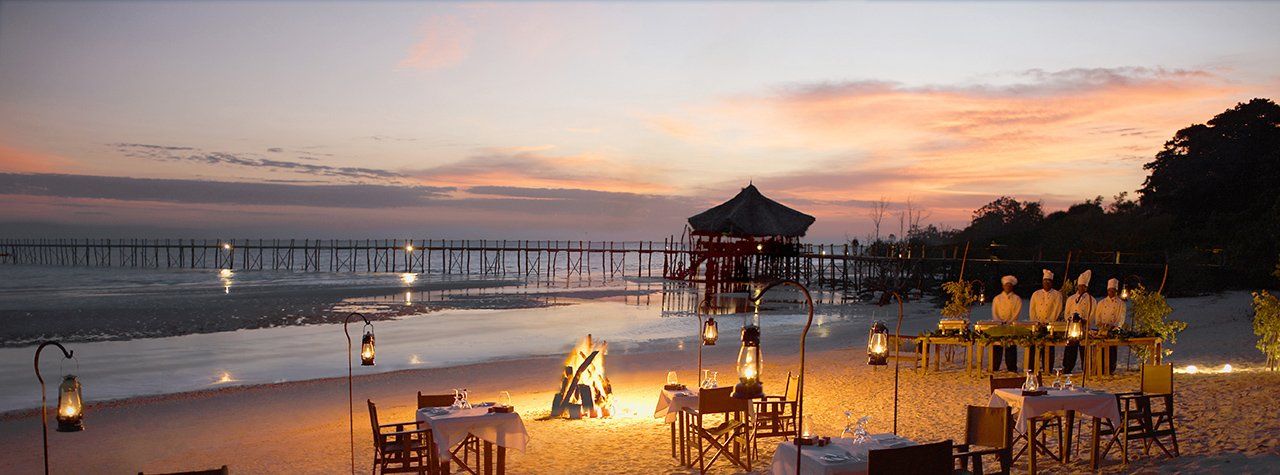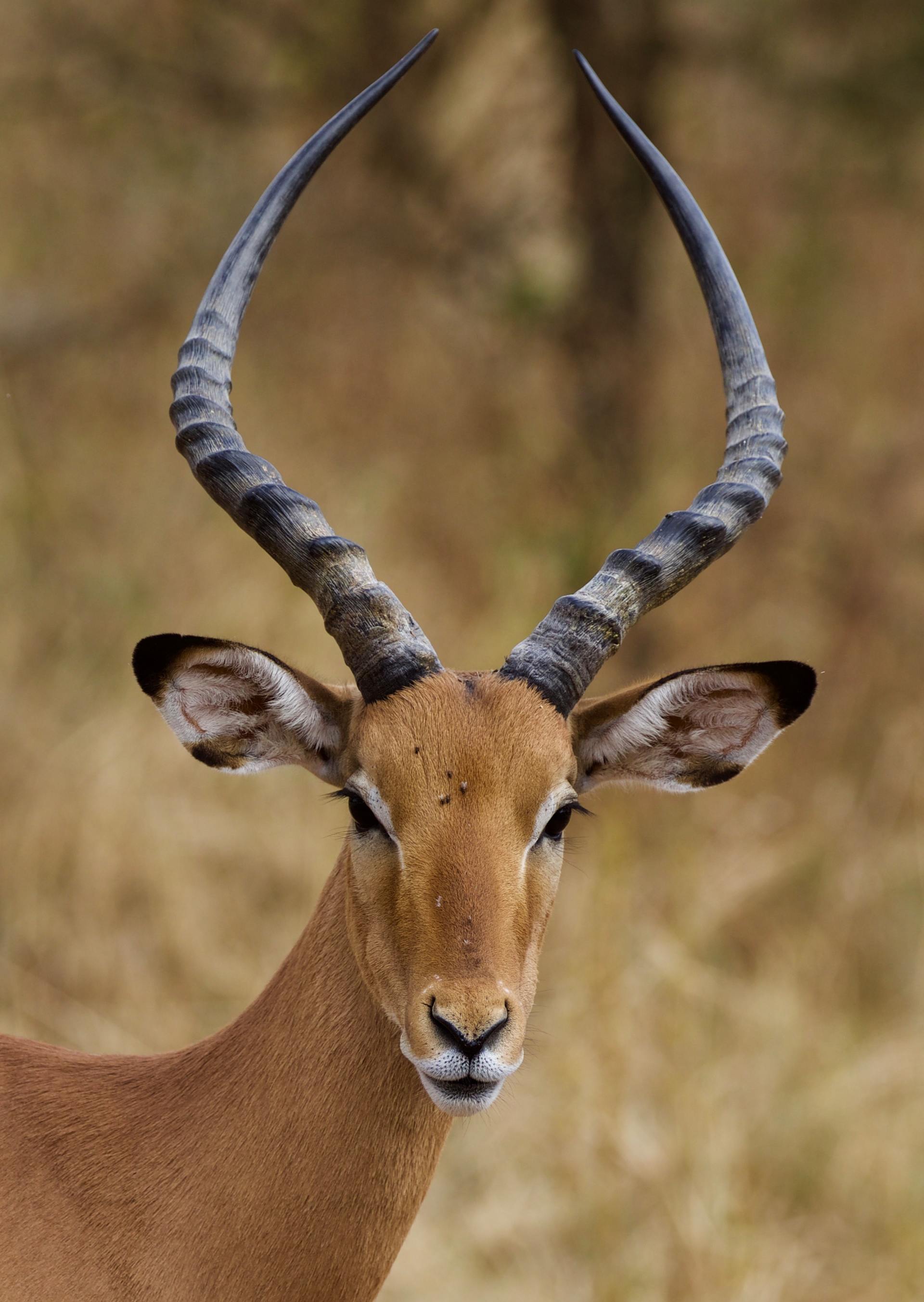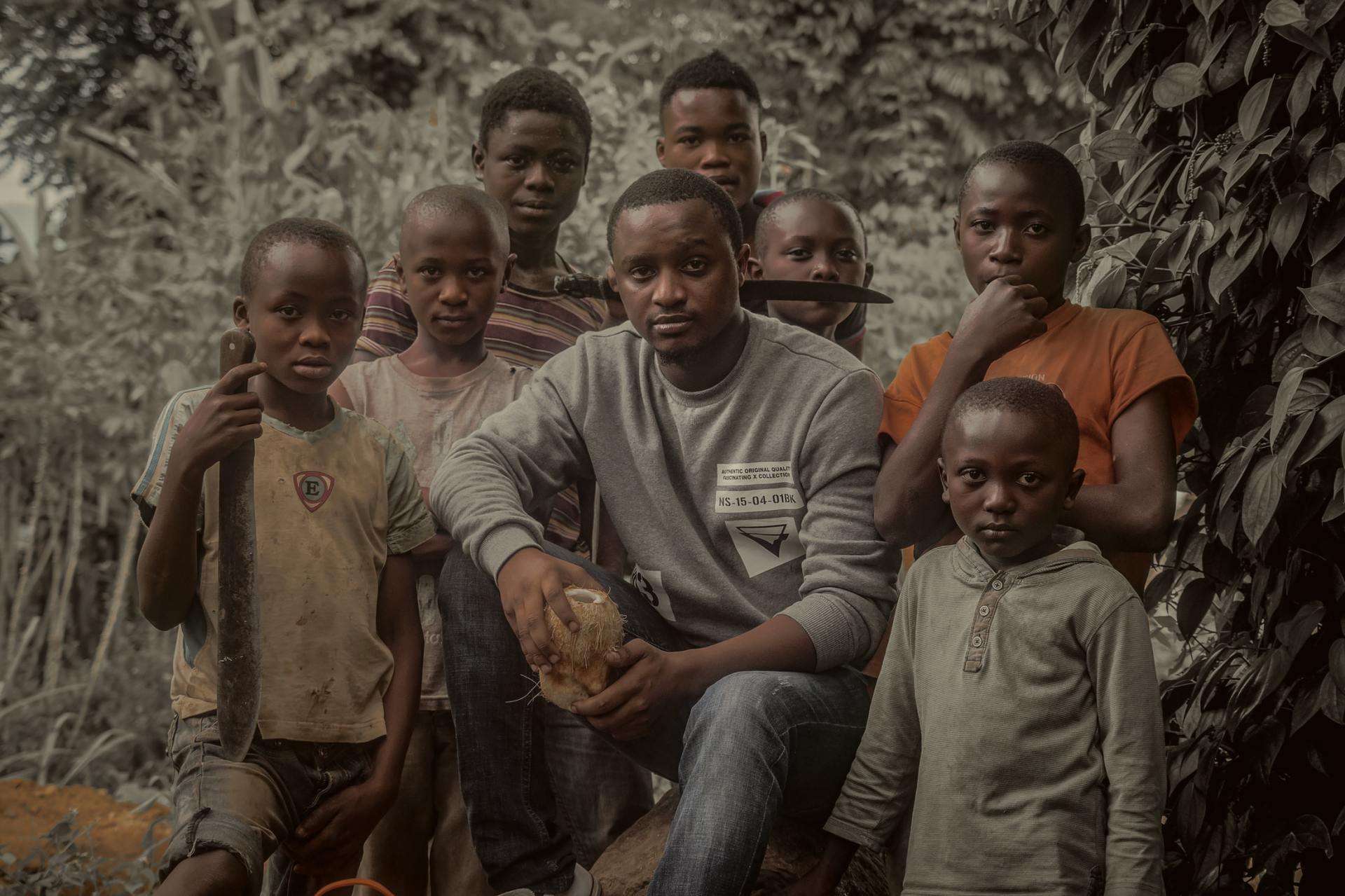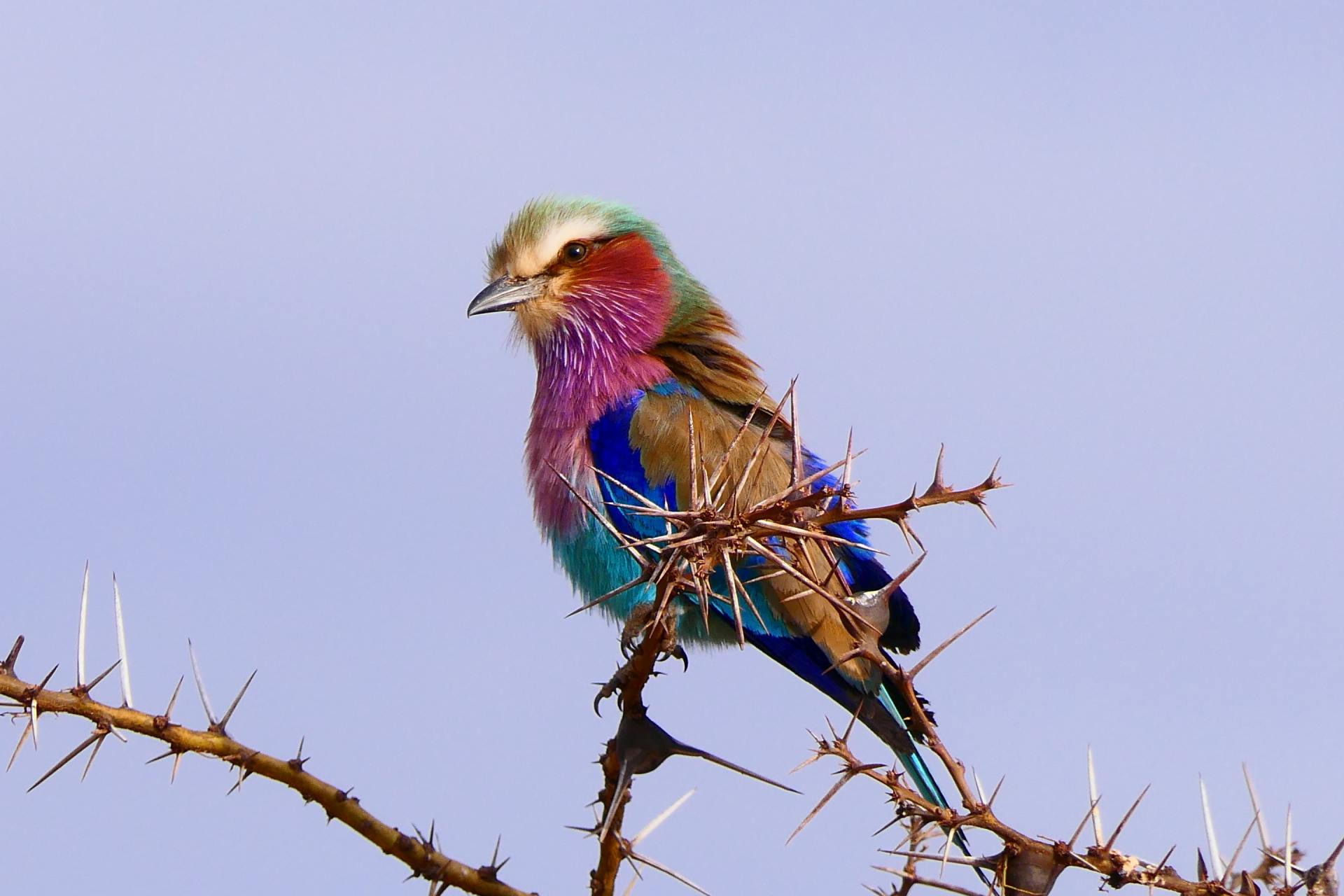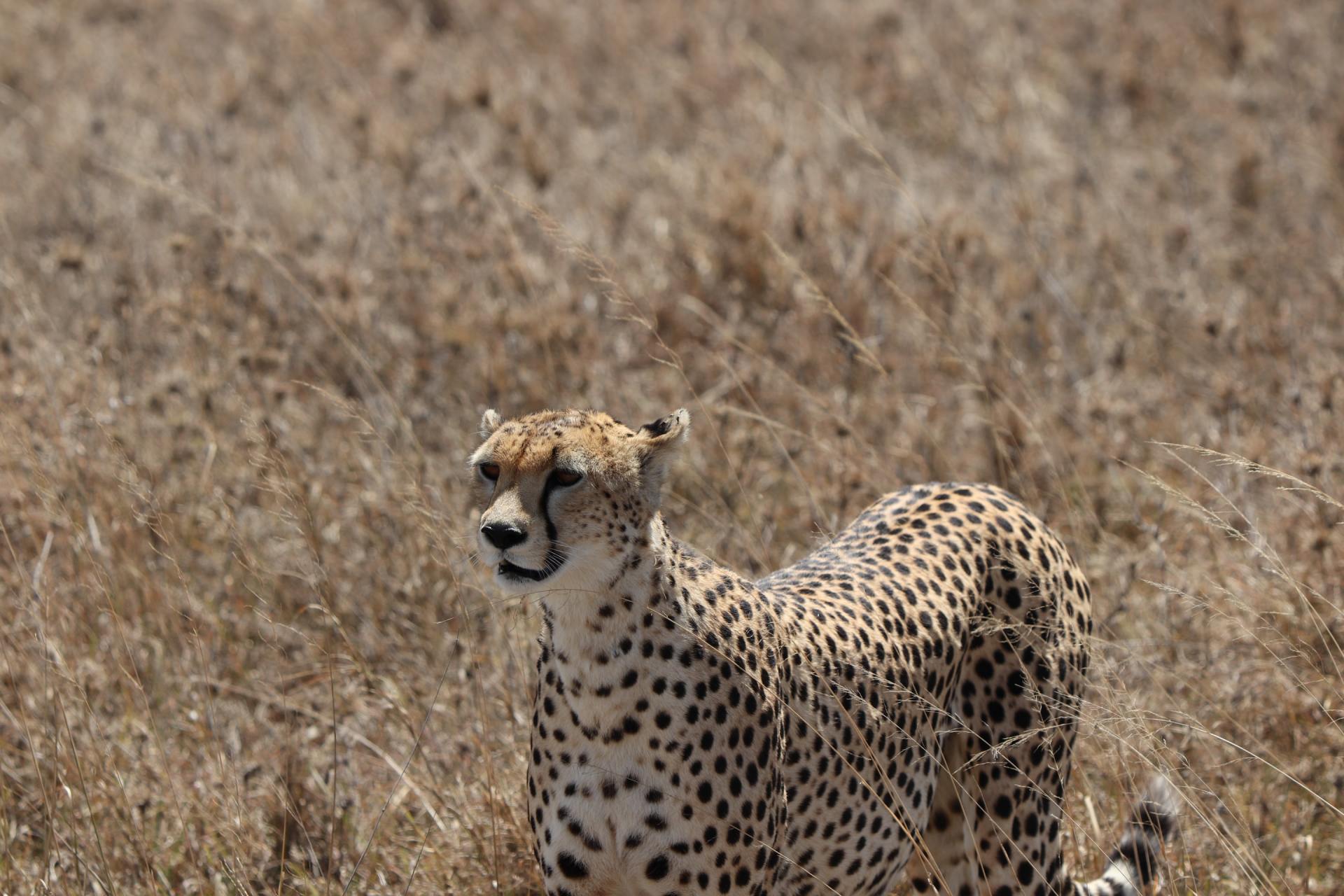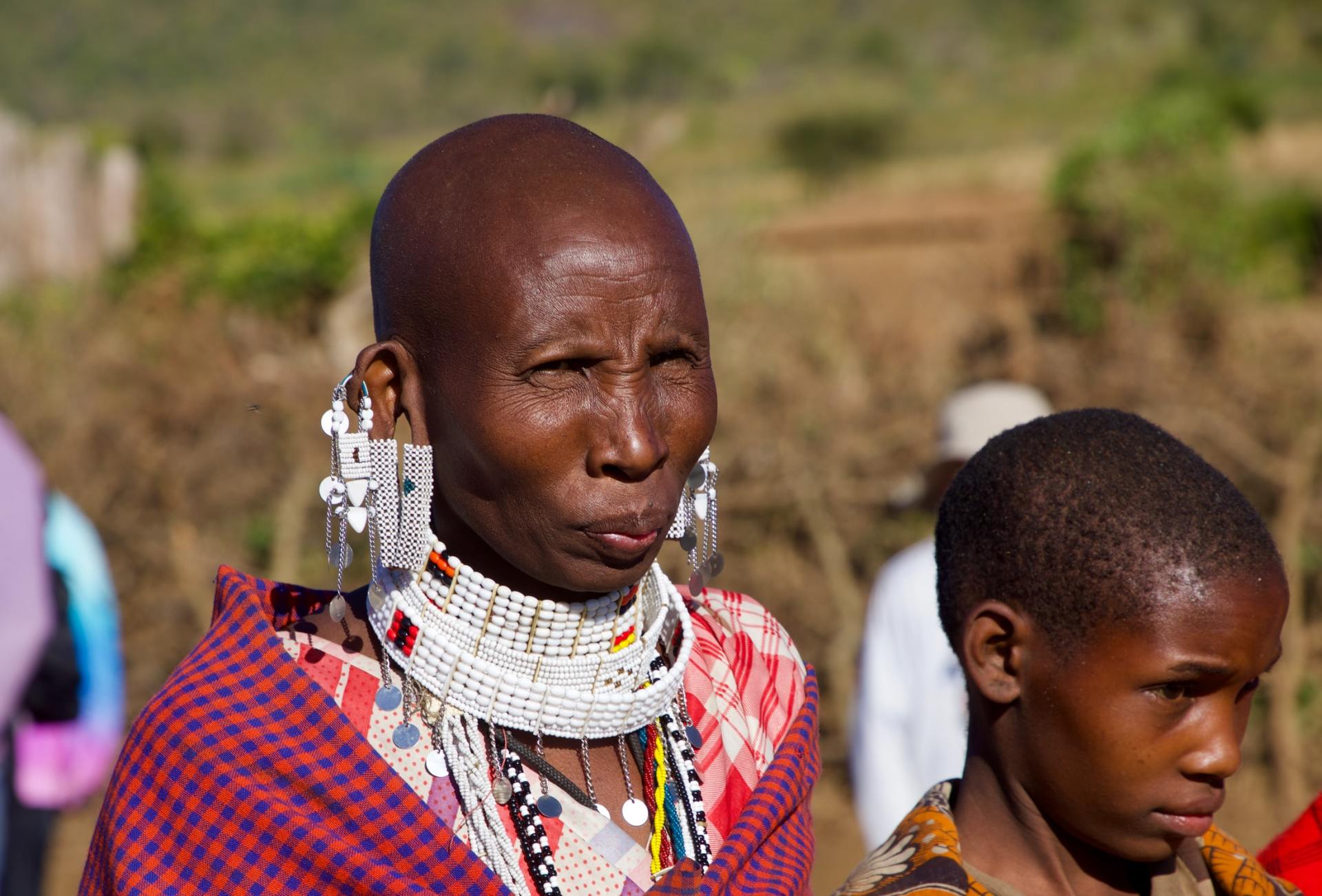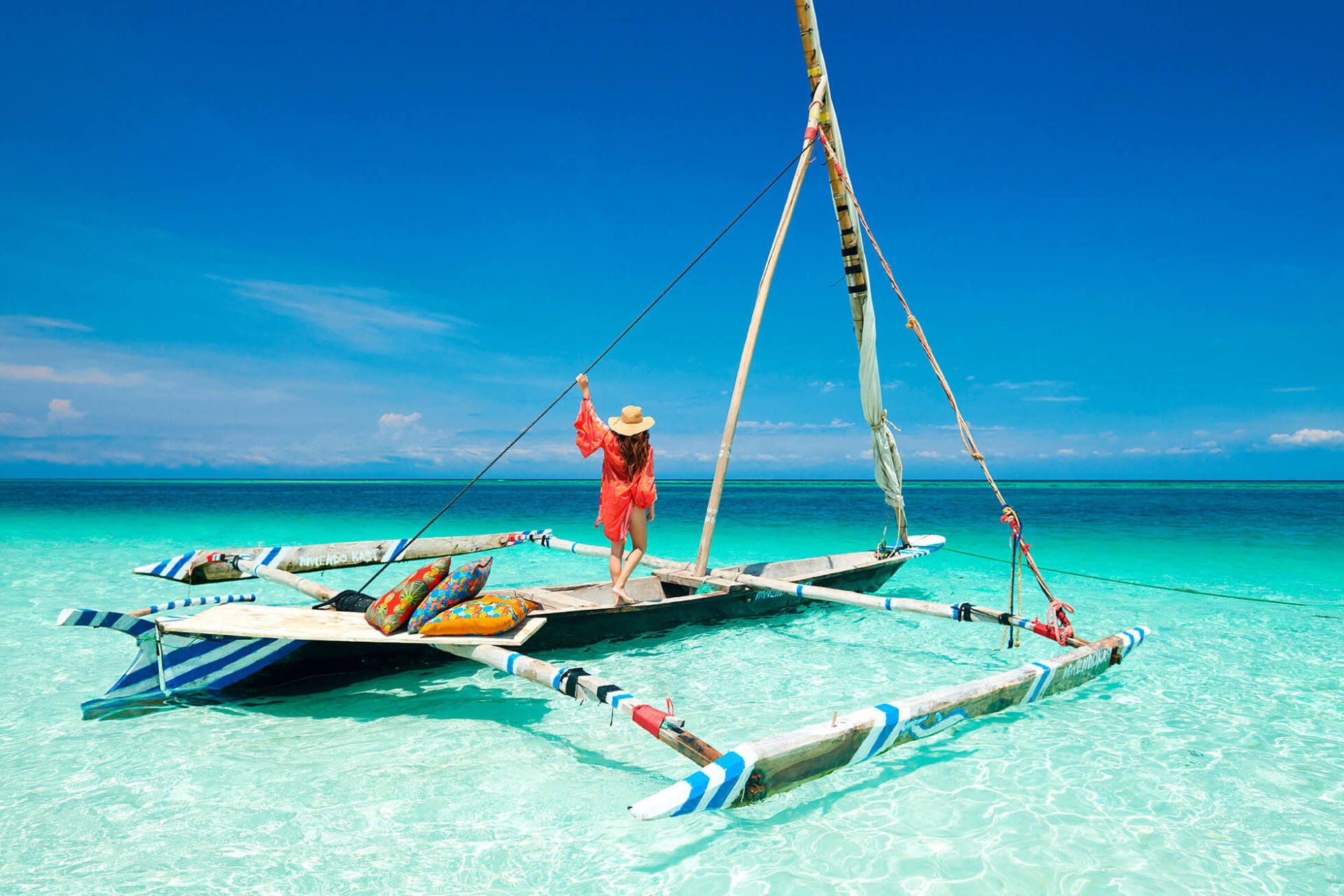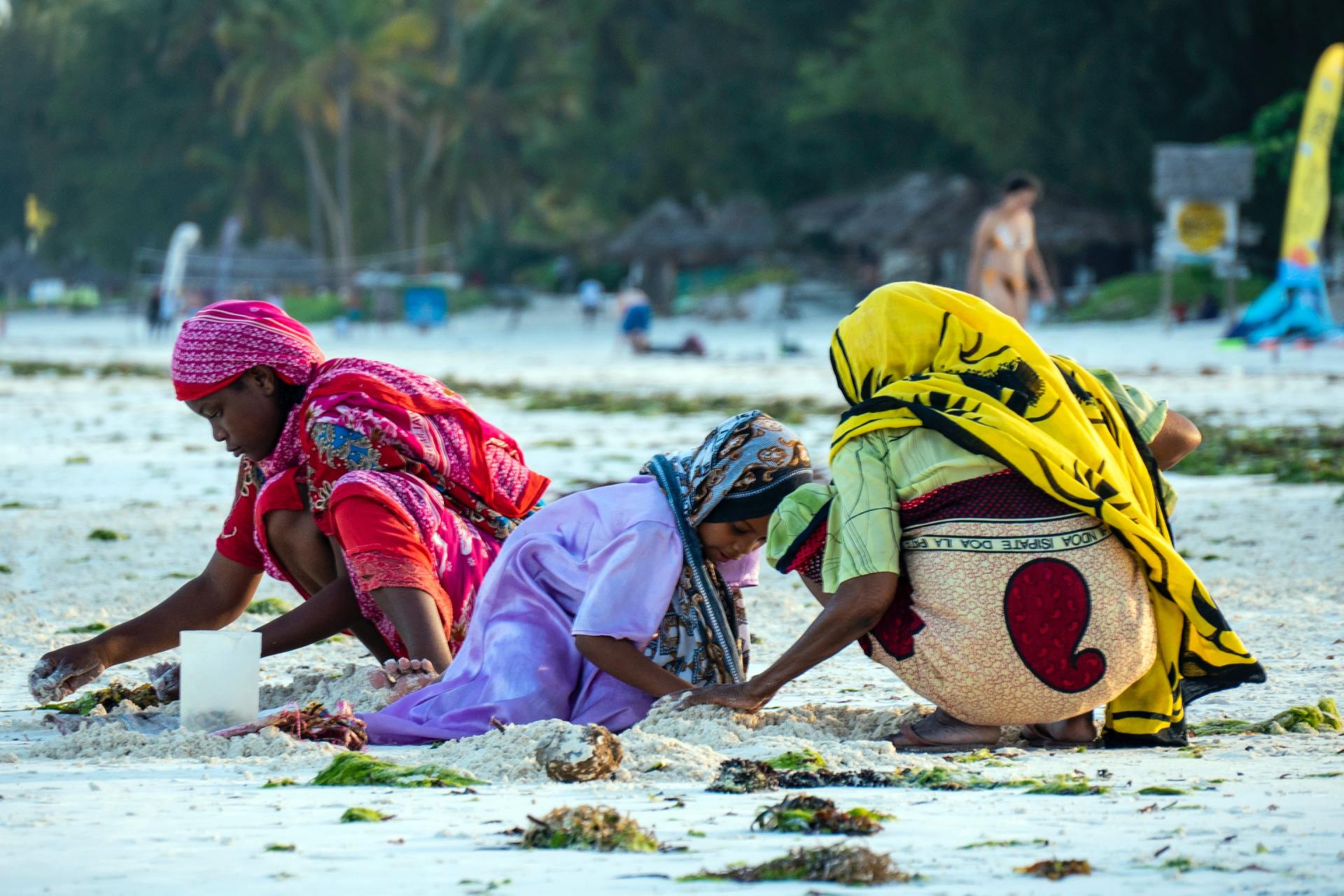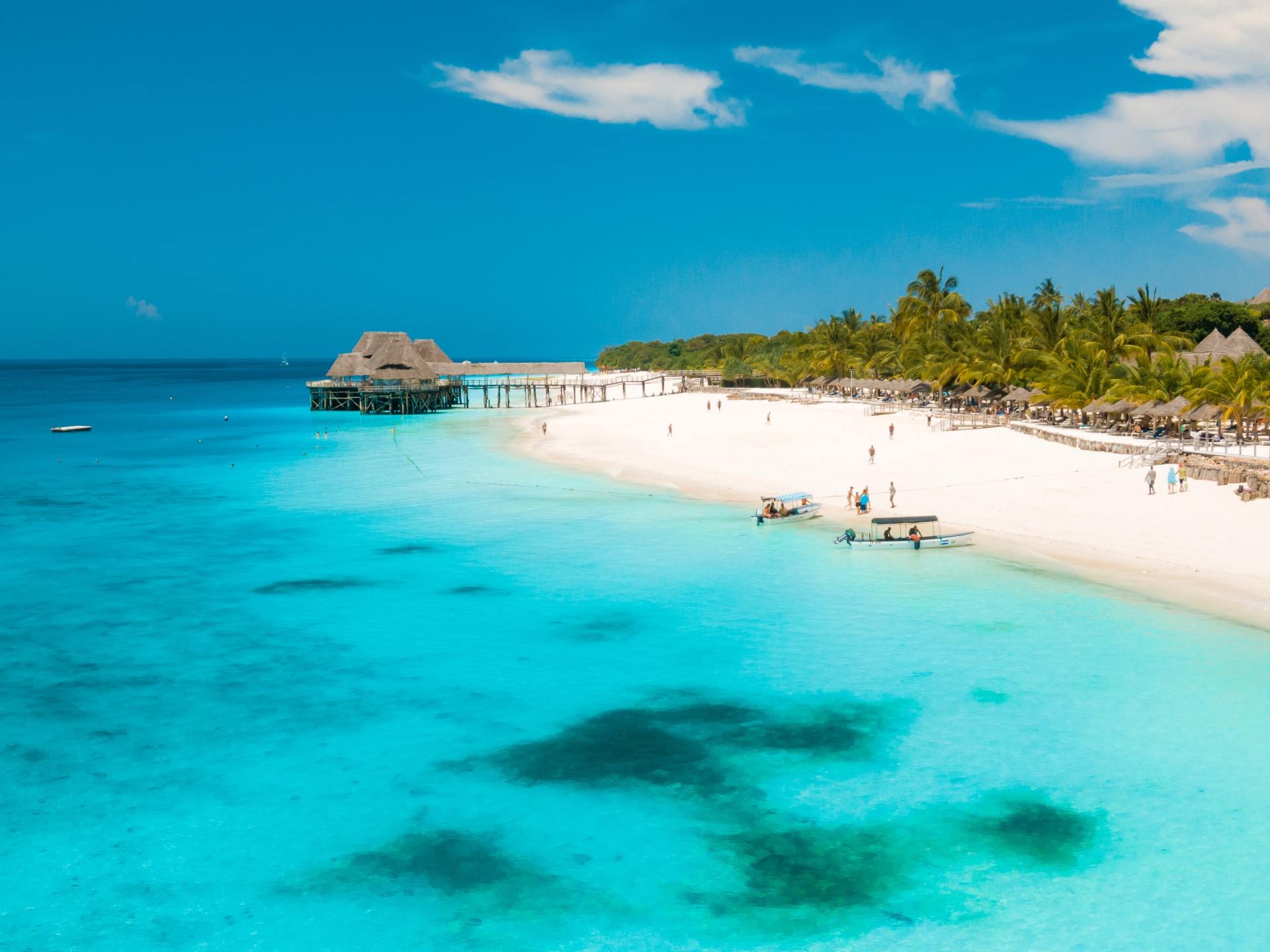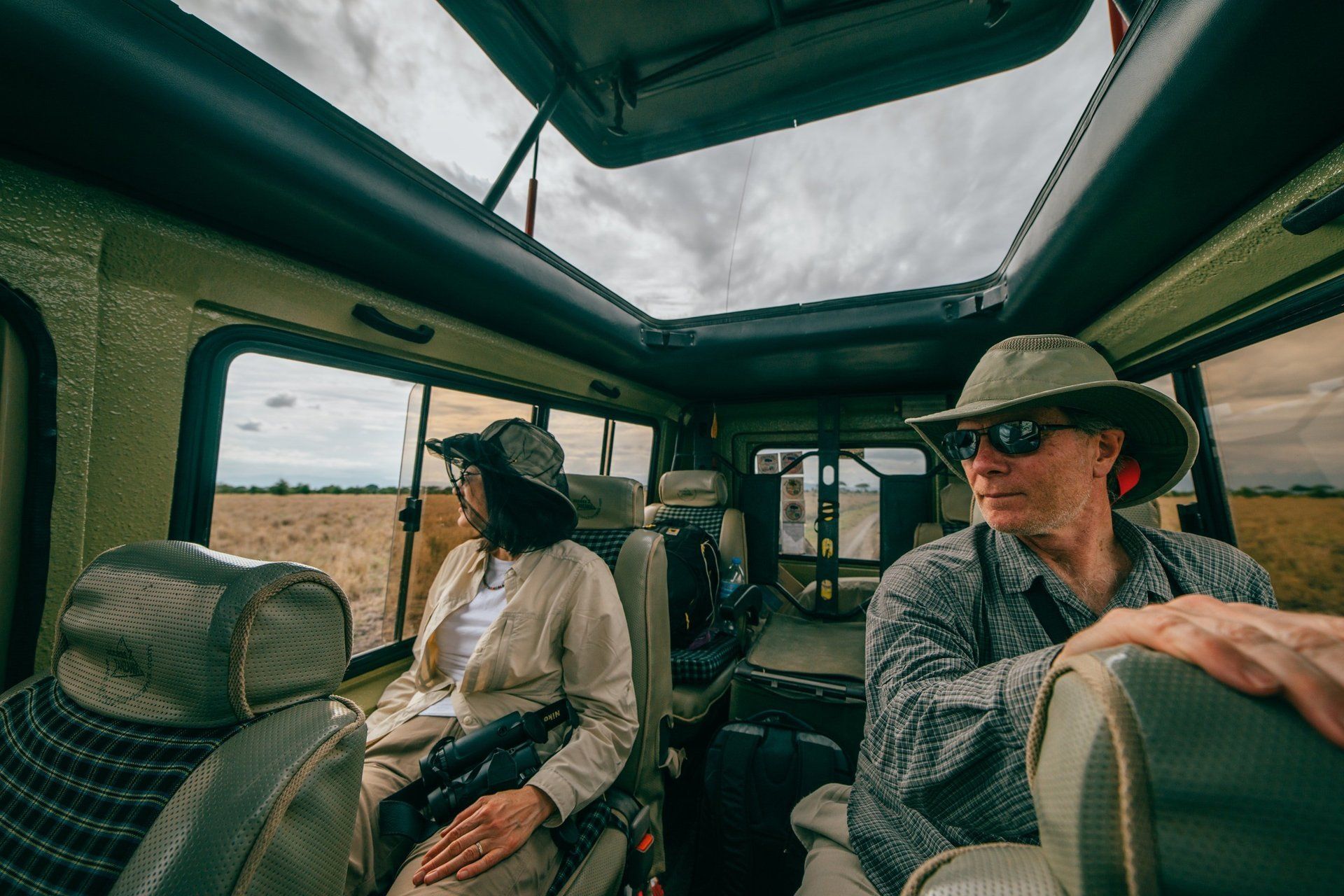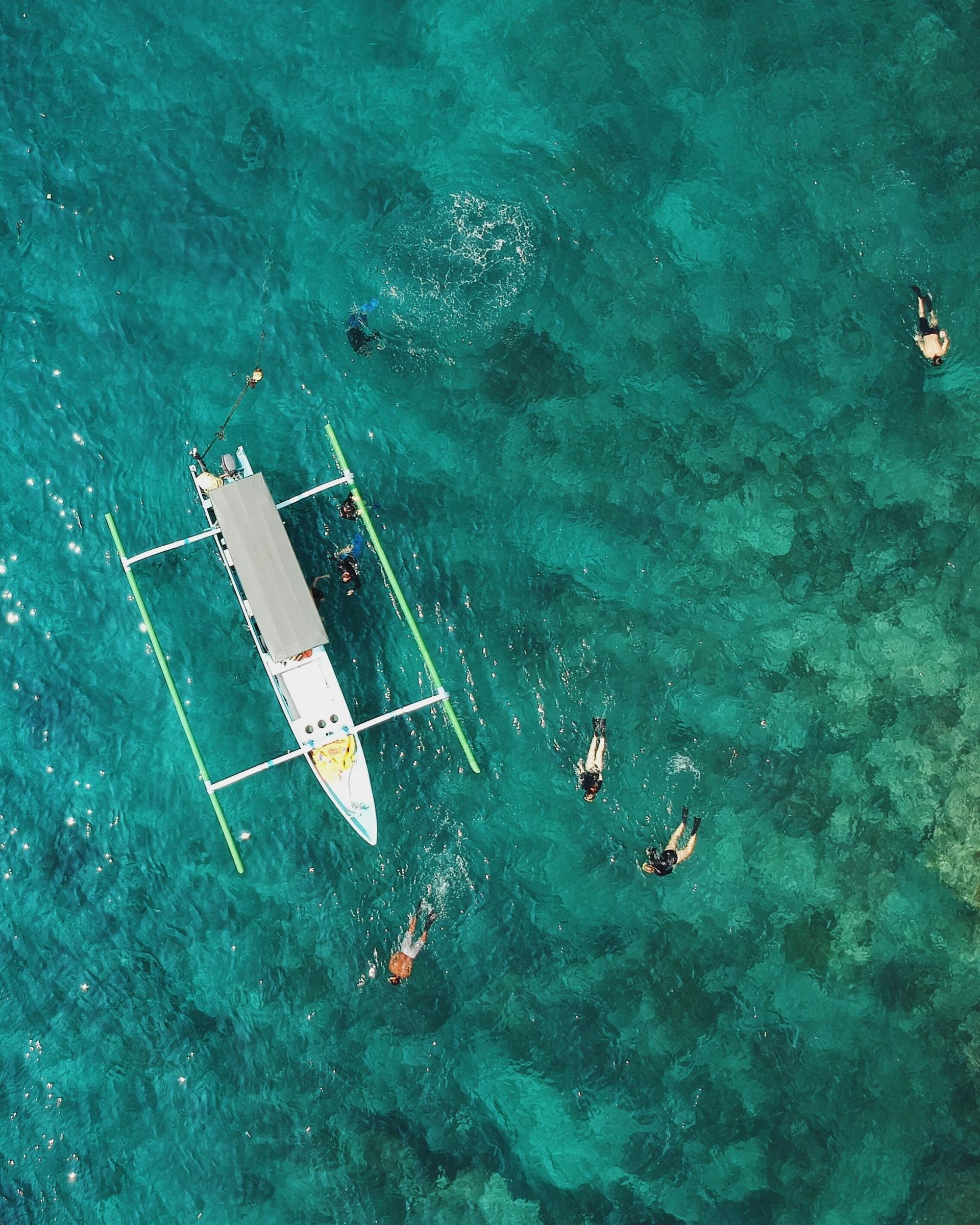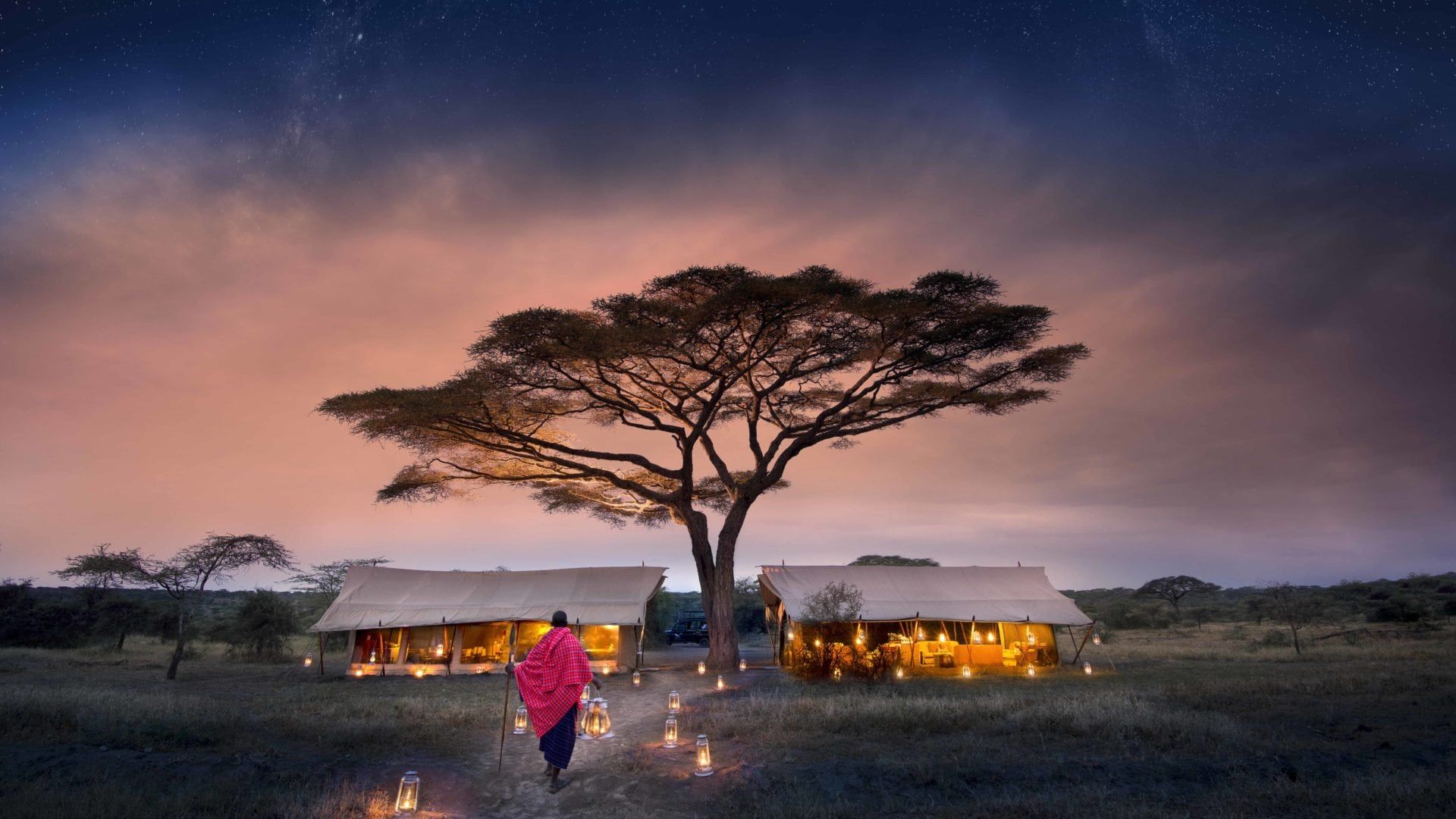Winter (June - September): The best time to go to the Serengeti National Park is during the dry season from June to September. Winter is typically the dry season in most of Africa and the same applies to the Serengeti. Days are sunny with clear blue skies and daytime temperatures remain very mild, and will not dip below 13°C -17°C / 55°F - 63°F.
We do, however, recommend you pack warm clothes for your safari game drives, as dawn and dusk – when you do the majority of our drives - are when you will notice the cold the most. If you wish to witness the famed wildebeest river crossing, we recommend you plan your stay towards the end of July and August and position yourself in the Northern Serengeti. This is usually when thousands upon thousands of animals cross the Mara and Grumeti rivers in search of more nourishing grasslands.
The mating season comes to an end in june and the River crossings can start! Of course River crossings depends on the rains and can never be guaranteed. The river crossing will happen from July to October in the Northern Serengeti region and Masai Mara.
Summer (January to March): January to March are the true summer months and our second favourite time to go to the Serengeti. The average temperatures are between 24°C - 29°C / 75°F - 84°F, and rain is extremely rare. This is also a pretty exciting time to follow the wildebeest migration as it is birthing season, with thousands of new-borns every day. Predators lie in wait for the easy prey and while you can expect to witness some grizzly scenes, summer is a favourite season for many Serengeti safari goers.
Spring (November - December): Spring will bring short rains, which will peak in November. Rain is mostly contained to short late afternoon showers, so this does not truly impact your game viewing. Temperatures are lovely, and rates are already lower than during high season. If you are on a tighter budget and seeing the wildebeest crossing isn’t a key consideration for you, spring would be our top recommendation.
Autumn (April - May): Autumn is our least favourite time for a visit to Serengeti National Park as it brings the long rains. While of course these rains are bitterly needed for both the flora and fauna to flourish, they will interfere with your safari and severely limit your enjoyment. Should you wish to pair your safari with a Zanzibar beach stay, please also be aware that April and May are not ideal months for Zanzibar either, as the island encounters a proper monsoon and many establishments close for the rainy season. On the plus side, rates are at their lowest during this low season, and the habitual hordes of tourists are conspicuously absent, so you do benefit from a much more intimate experience.




